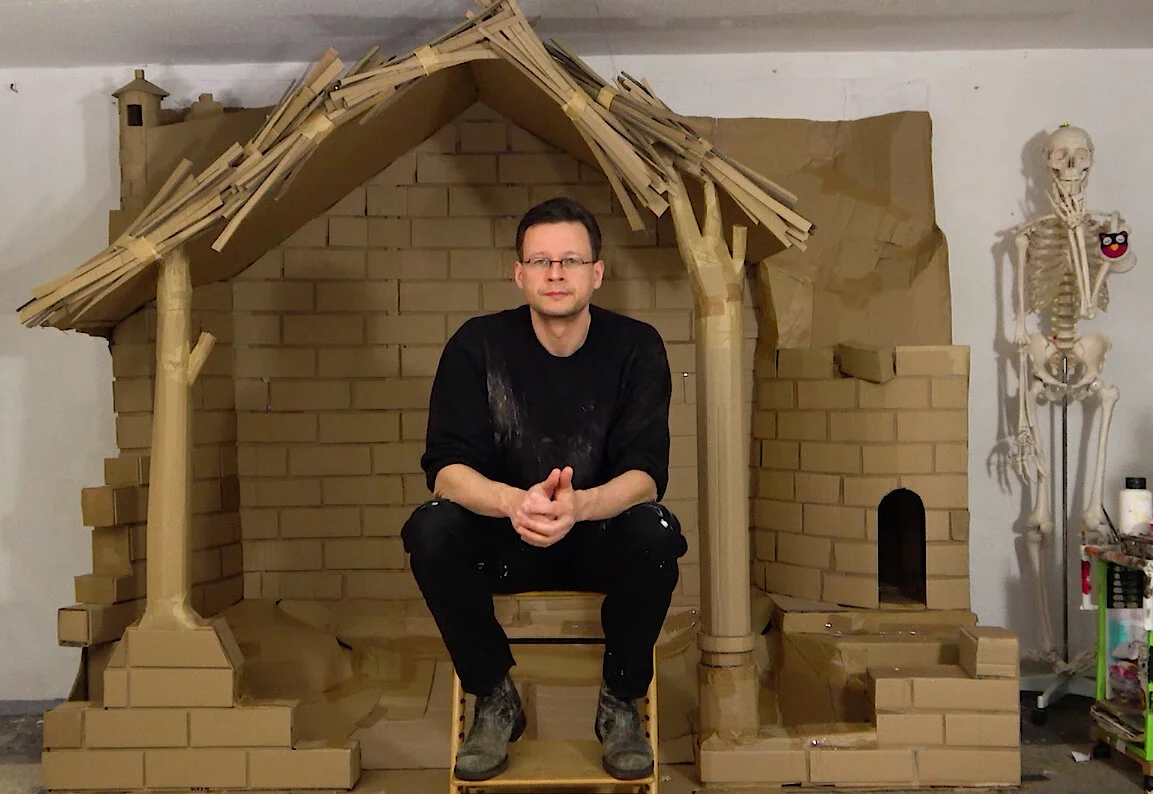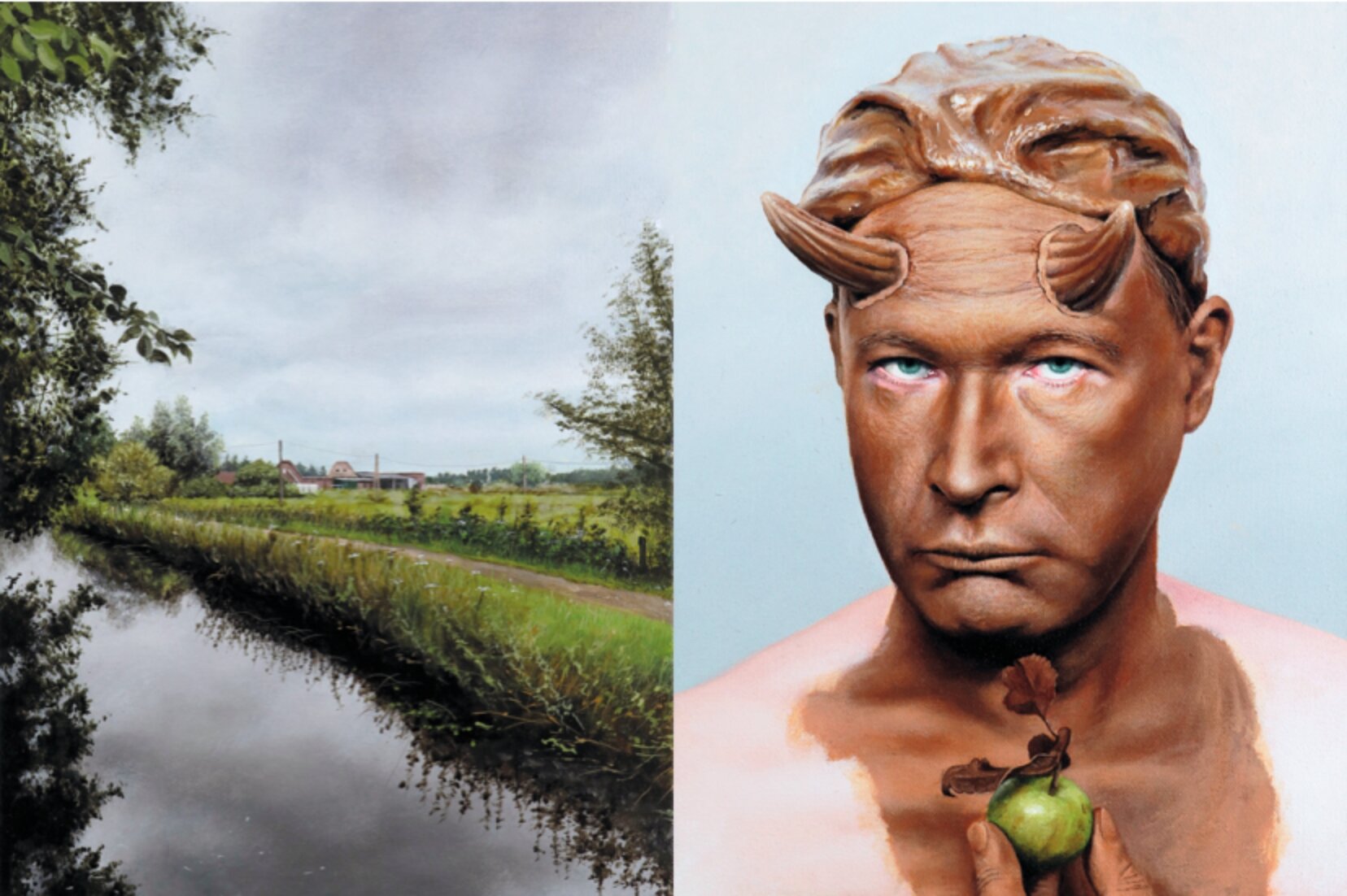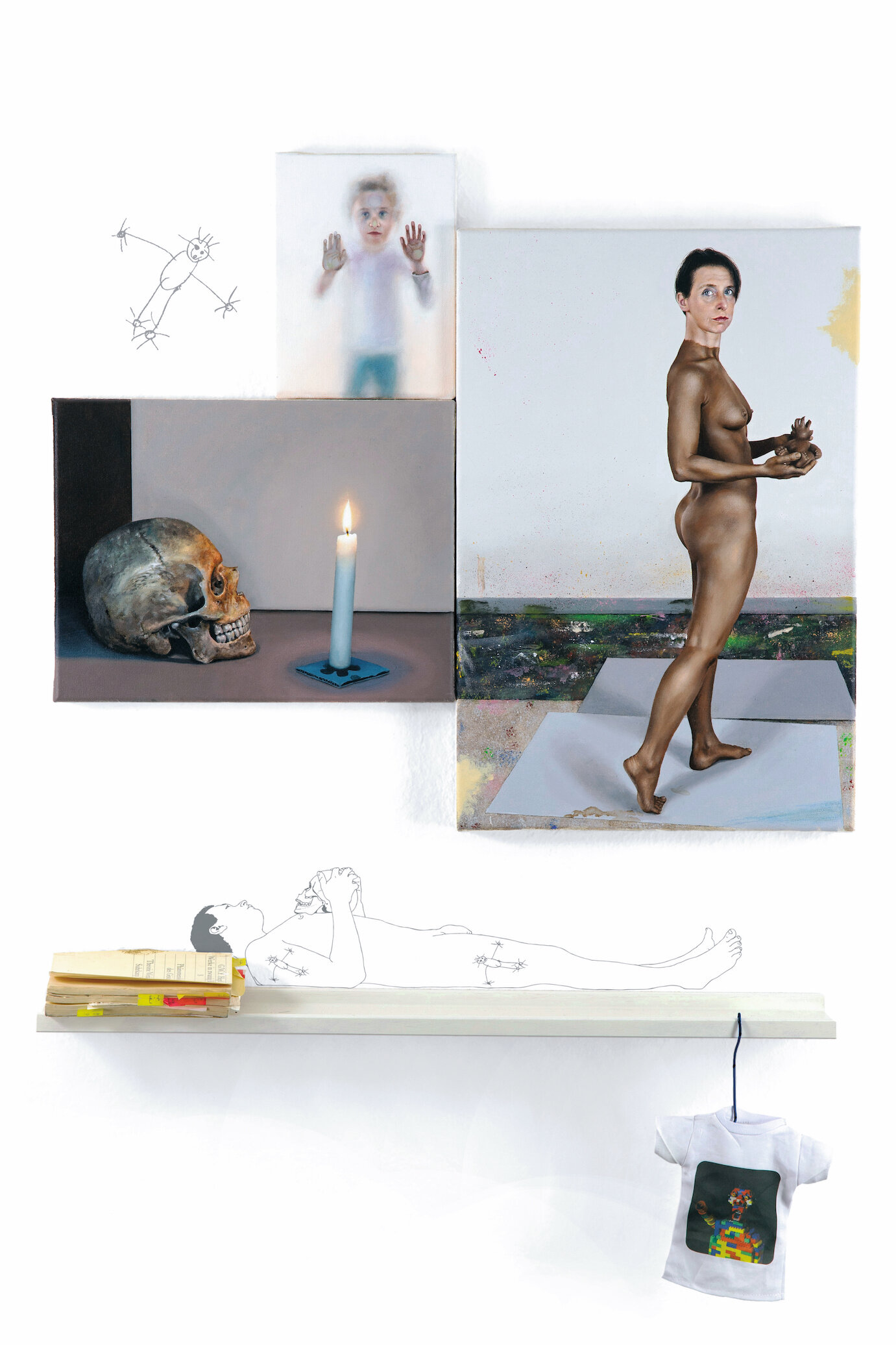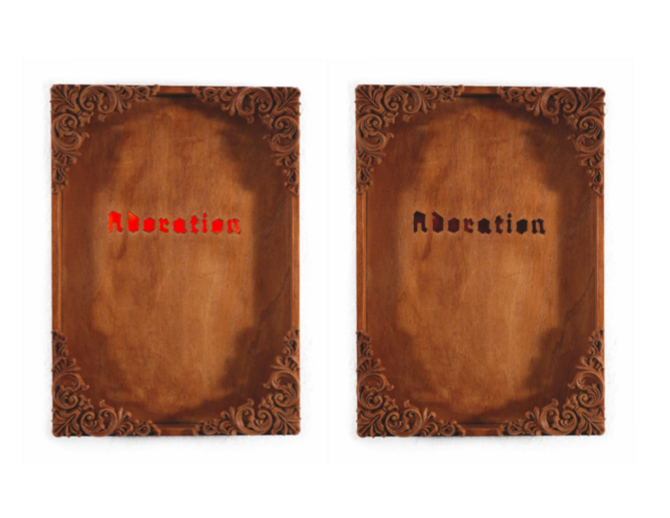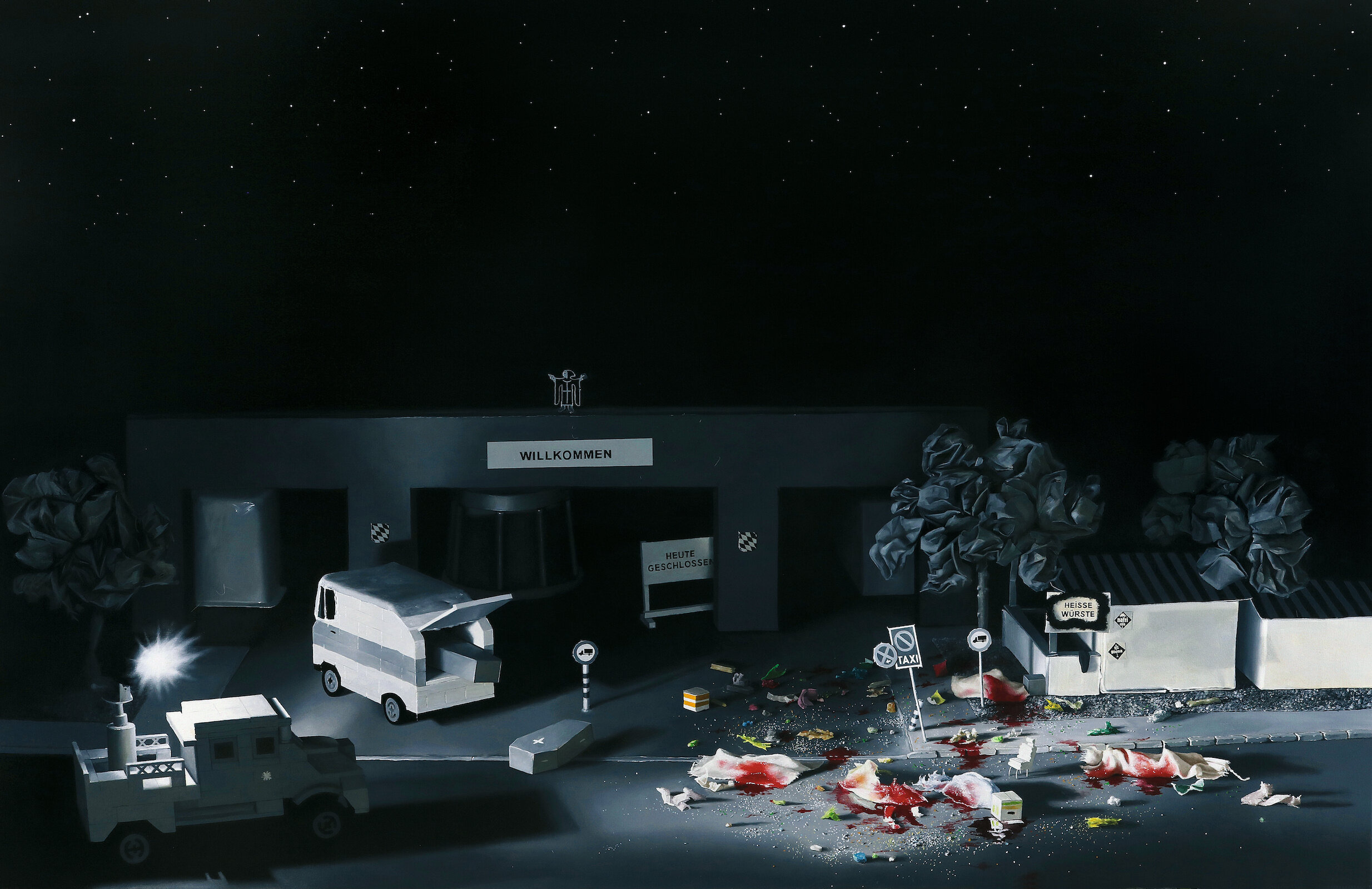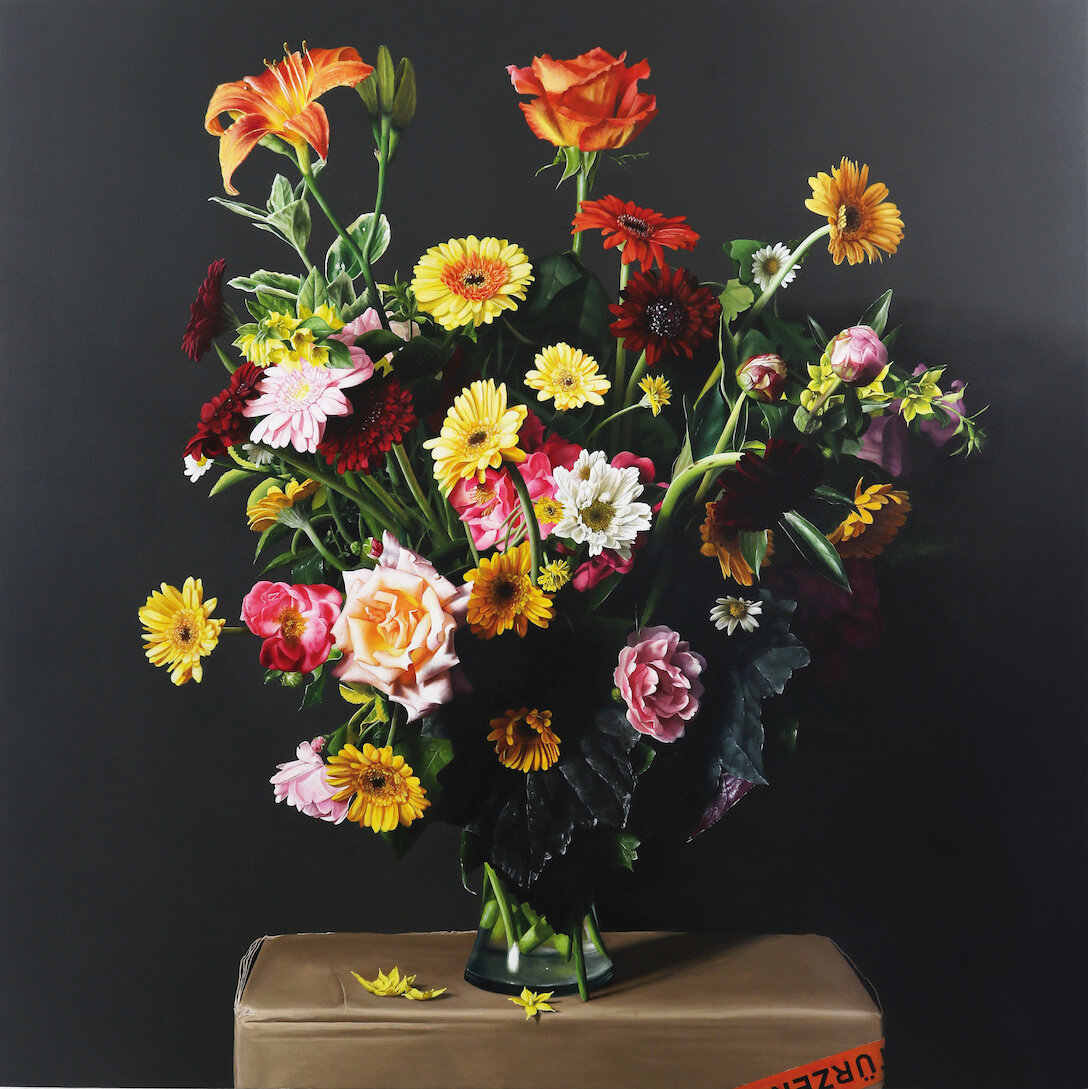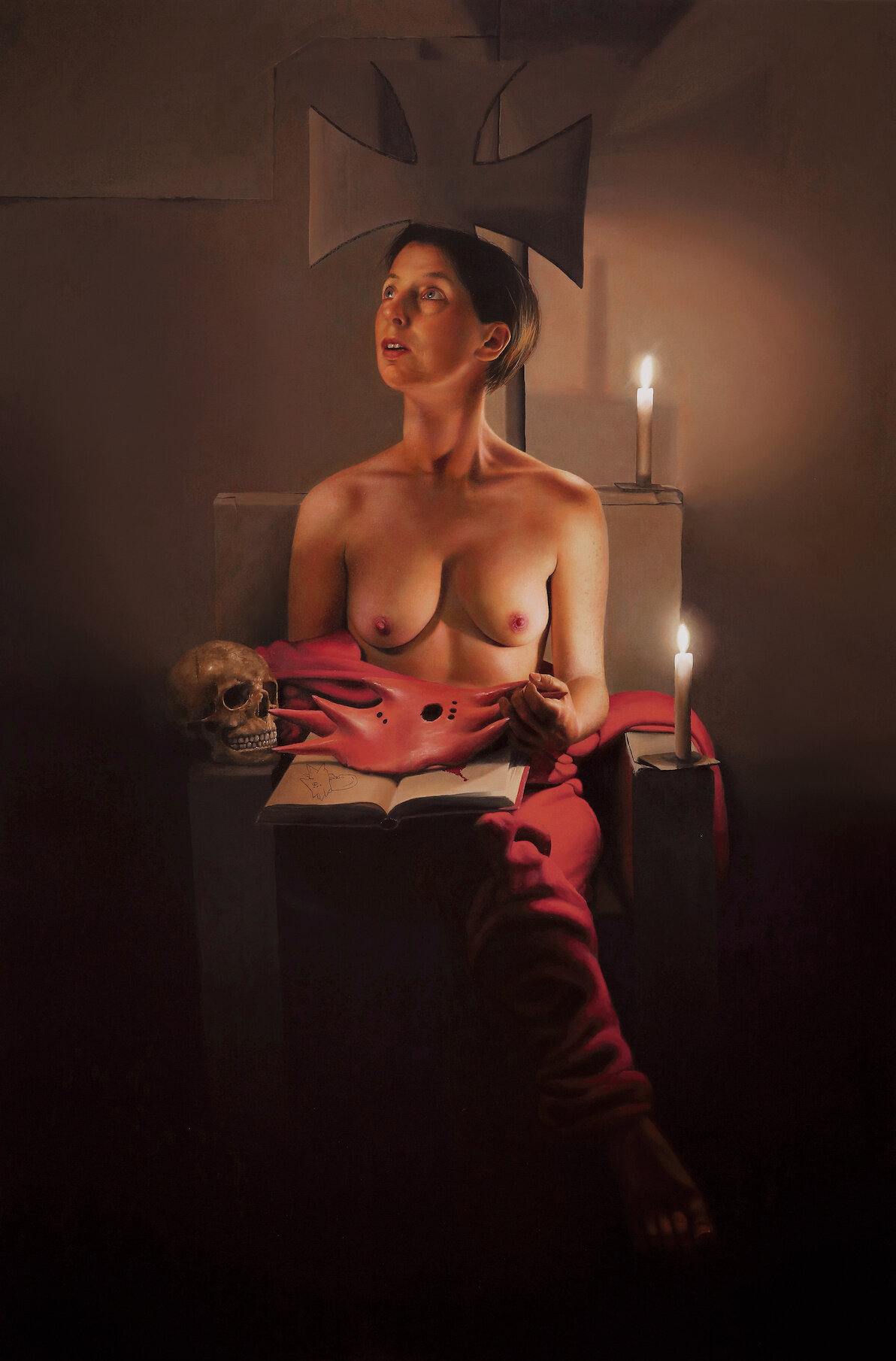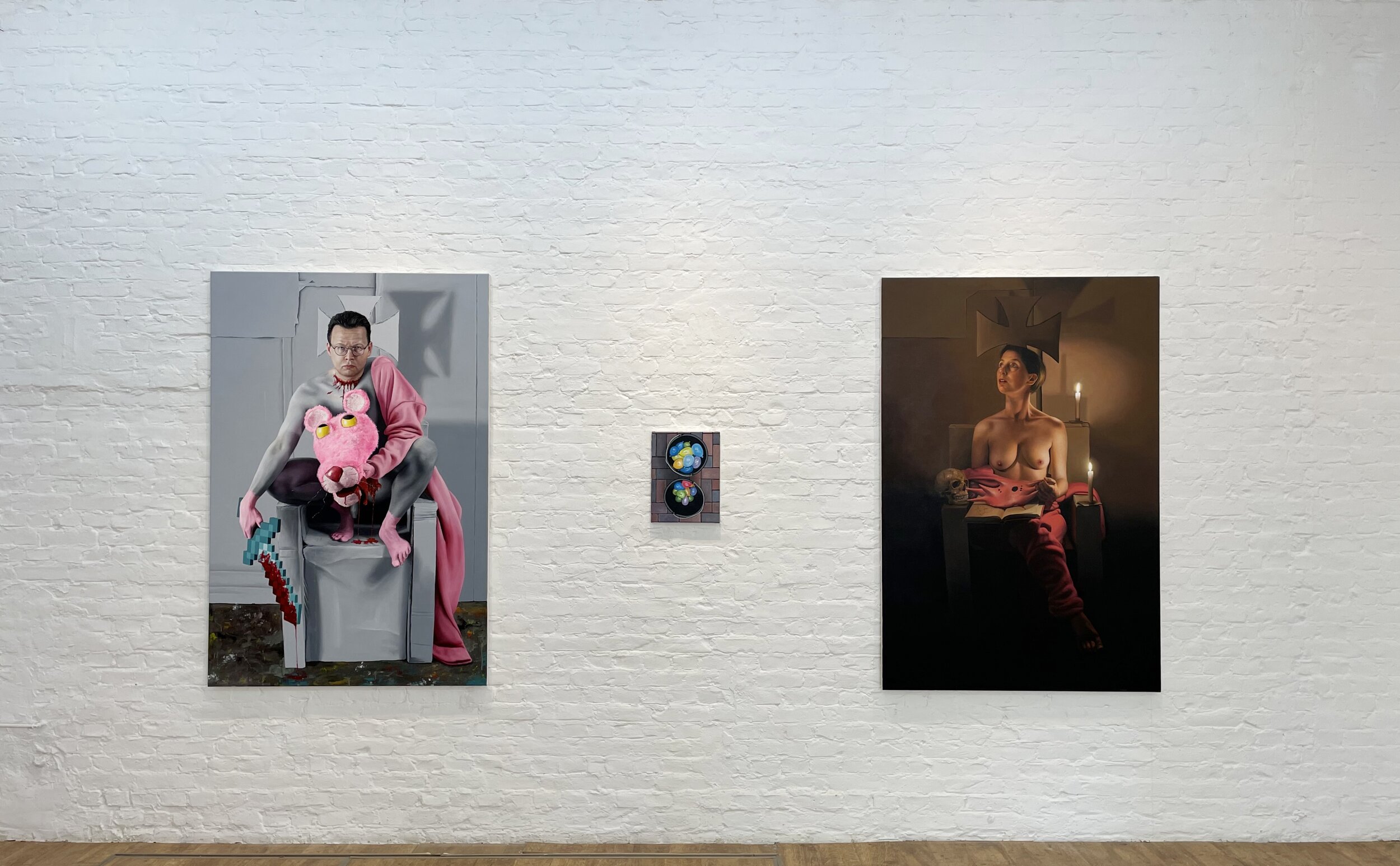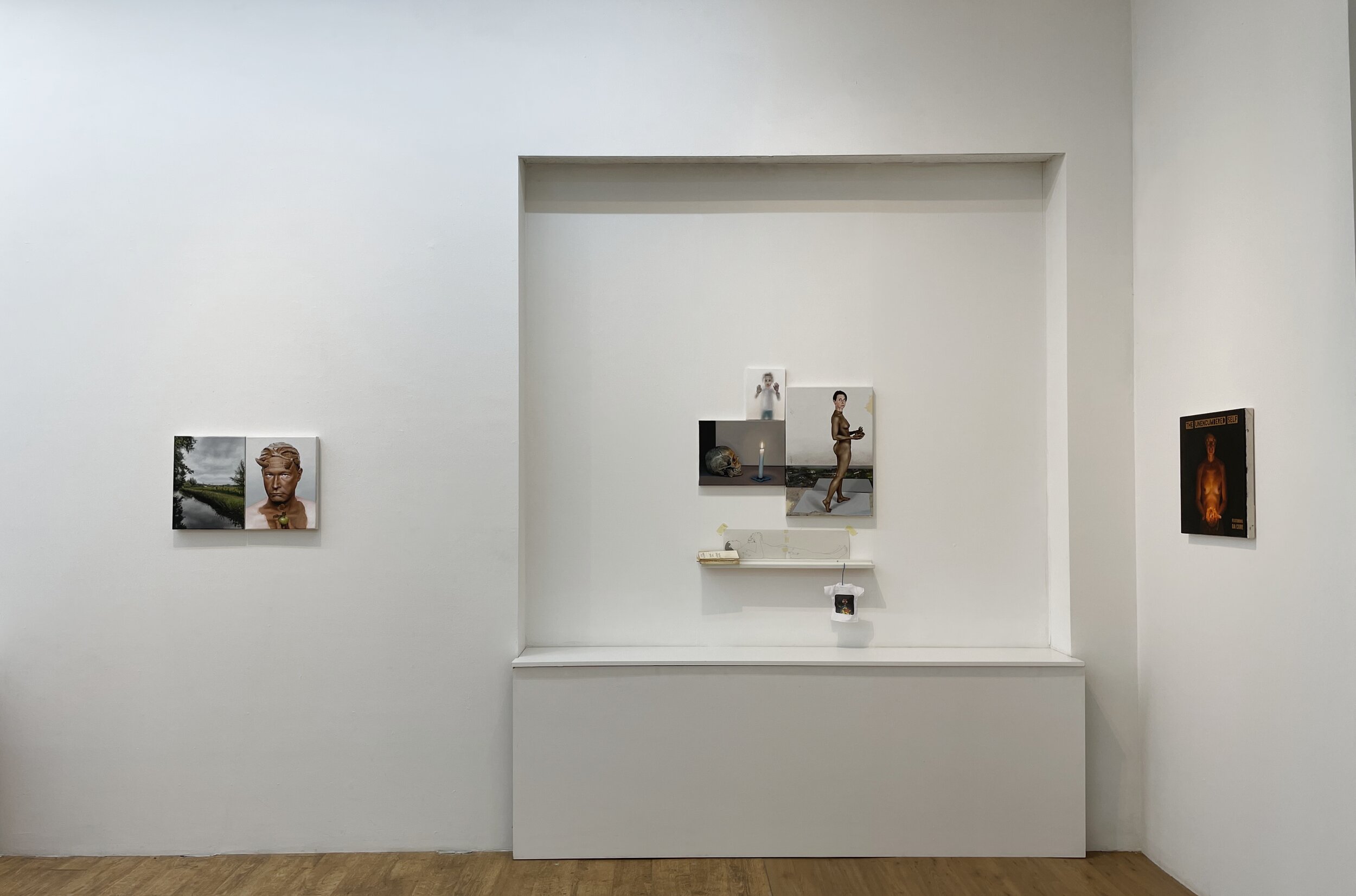In this 14 minute video René Schoemakers talks about his work and the exhibition at Karl Oskar
René Schoemakers, Genius Loki (Kever Skizzen II), 2020, Acrylic on canvas, 2 parts, each 40 x 30 cm
René Schoemakers is a painter with his feet planted firmly in the 21st century, and a curious gaze that stretches far back into art history. His crystal clear brushstrokes capture the melancholic present — illuminated by its characteristically cold, blinding light — adorned with a wealth of symbolism from the past. Born in 1972, in Kleve, Germany, Schoemakers studied painting, philosophy and the history of art. The study of philosophy has been a major influence on his work, driving a desire to encompass the universal in the intimate. Existential themes colour the seemingly ordinary scenes depicted in his paintings. About the Missing Kink, Christoph Tannert writes: "If darkness had a cadence, it would be audible in the presence of René Schoemakers' pictures. With pessimistic precision he expresses a feeling of crisis, which is very contemporary and almost unashamedly current, challenging us with occasionally evil metaphors.” His solo exhibition at Karl Oskar Gallery — titled ‘Weltgeist/ Ortsgeist’ — is a relatively small exhibition, yet one that deals with big ideas. Weltgeist refers to the title of Schoemakers' recently completed series; Ortsgeist to Genius Loki (Ortsgeist), a brand new and ongoing series, which expands upon Weltgeist by returning to his home in the Lower Rhine region and dealing with influences from his early youth.
Schoemakers does not consider himself a photo realist, rather his work dialogues with the tradition of painting from Cranach to the 19th century Naturalists. His process echoes these traditions, except in his almost exclusive use of acrylic paint instead of oil. His technically brilliant painting, strong focus on the interplay of light and dark, translucent brushstrokes and careful attention to the surface of the painting are most reminiscent of 15th century Dutch painting. Often the construction of a physical model precedes the brush on canvas — a model which is, importantly, an imperfect one that looks identifiably handmade. This somewhat loose, imperfect and unfinished structure is then painted with extreme precision, a juxtaposition which reminds us that there are no perfect, finished things. Another notable characteristic of his paintings, besides the use of models, is that his work generally features his family as models exclusively. Their faces appear again and again in his work, a repeating cast of characters who assume a variety of different roles.
René Schoemakers, Genius Loki (VI - cutter sis), 2021, Acrylic on canvas, 2 parts, 60 x 70 cm
René Schoemakers , Genius Loki | Supervenience, Baby! (Sie befinden sich hier:•), 2020, Acrylic on canvas, mixed media, Ca. 90 x 80 cm
Two new works from the Ortsgeist series demonstrate Schoemakers’ interest in creating multi-part pictures. These composites place different parts of a painting (including from different genres of painting) in contrast to each other, often incorporating sharp cuts. The elements of a single picture can be very different, to the extent that they may include physical objects, as seen in ‘Supervenience Baby! (You are here:•)’. Instead of smoothly integrating everything into one pictorial space, Schoemakers encourages the viewer to unite these disparate, partial scenes for themselves. Children’s drawings frequently make an appearance in his compositions, either placed directly on the wall or included in the painting — not invented and drawn by the artist, but pilfered from his own children. The drawings simply provide another dimension for representing reality, in addition to the classical figuratively painted reality, and lettering, objects or other forms of graphic representation incorporated in his work. “Iron Maiden” serves as a perfect example of this, combining three perspectives on a vulnerable nude female figure, with an illustration of the infamous historical torture device itself.
René Schoemakers, Iron Maiden, 2020, Acrylic on canvas, vinyl, 40 x 30 cm
René Schoemakers, Adorationskiste (Klever Skizzen I), 2020, wood, lights, mixed media. 35 x 25︎︎︎︎︎︎︎︎︎︎︎ ︎︎︎︎︎︎︎cm
René Schoemakers wrestles with big ideas, in particular the dangers associated with their seductive charm. His work resists the blind devotion to ideas that negate all others — so characteristic of religious and ideological fanatics everywhere. In the three-part painting ‘Ja!Ja!Ja!’ (Yes! Yes!Yes!), we see a figurine of a crusader on fire, melting and then collapsing. This is the inevitable fate of a person consumed by the fire of their own beliefs, a passion that is so destructive that they burn themselves in its fury.
In the two oldest works in this exhibition, entitled "München
leuchtet” (Munich shines), which were the initial impulse for Schoemakers' Weltgeist series, he deals with Germany’s long legacy of right-wing extremism. "Deutscher Herbst (Theresienwiese)“ is based on crime scene photos of the Oktoberfest bombing perpetrated by right- wing terrorists in Munich in 1980. Initially working from press photographs of the disaster, Schoemakers then progressed to building a true-to-scale model in order to faithfully recreate the scene. After the model was finished, he illuminated it and painted it.
René Schoemakers, München leuchtet (Theresienwiese, Deutscher Herbst), 2019, Acrylic on canvas, 130 x 200 cm
René Schoemakers, München leuchtet (ToniRoth!ToniRoth!ToniRoth!), 2019, Acrylic on canvas, 130 x 130 cm
“München leuchtet” includes a second painting, at first glance a floral still life, resplendent in its beauty. Scratching the placid surface reveals more, as the title suggests: “ToniRoth!ToniRoth!ToniRoth!”. Toni Roth was a painter from Munich who was granted a prominent position during the Nazi regime, patronised by the state and regularly represented in the "Große Deutsche Kunstausstellung”. His exhibits usually featured beautiful floral still-life paintings. After the war, like so many others, he simply continued to paint still life paintings of flowers, which by then incorporated a somewhat modernistic touch. In these beautiful and seemingly innocent flowers we see a symbolic connection to the heritage of right-wing extremism, and its modern manifestation in the Oktoberfest attack.
Titles add another layer of complexity to his work. A seemingly innocuous image of the back his little daughter’s head wreathed in two pretty braids is titled ‘BDM’, after the "Bund Deutscher
Mädel" (League of German Girls) — the girls’ wing of the Hitler Youth who were encouraged to wear their hair in braids. "Der böhse Paul” depicts the artist seated on a throne, a motif which refers to a Hegel quotation. ”Paul" stands for "Paulchen Panther", the German name for the Pink Panther figure; the animated character was coopted by the right-wing terrorist group NSU (National Socialist Underground), making an appearance in a now infamous confessional video for their series of murders. The second part of the title, “böhse”, misspells böse (evil) as an allusion to the (formerly) right-wing extremist band "Böhse Onkelz”. Symbols and references are everywhere; it is often the case that his work has some philosophical background, which only becomes apparent after a more detailed look at the paintings. Schoemakers enhances tranquil everyday with the lineage of ideas we are both blessed and burdened with.
René Schoemakers , BDM, 2019, Acrylic on canvas, 60 x 45 cm
René Schoemakers, Der Böhse Paul (Mekanïk Destruktïw Kommandöh ), 2019/20 Acrylic on canvas, 180 x 120 cm
René Schoemakers, Der Böhse Paul (Kreühn Köhrmann Iss De Hündin), 2020, Acrylic on canvas, 180 x 120 cm

